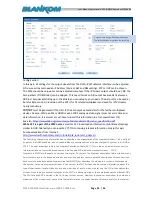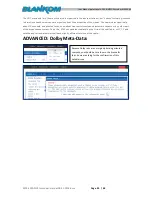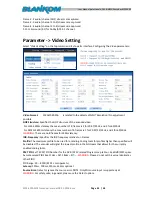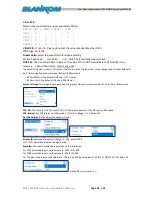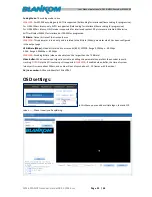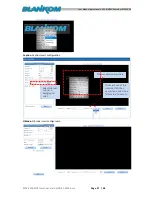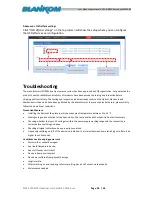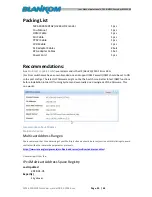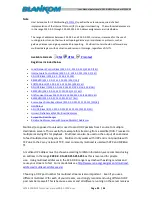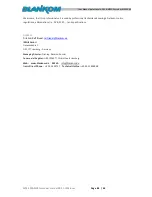
User Manual professional h.264 & MPEG2 encoder MPE-4000
MPE-4000-MPEG-encoder-manual-RR-03-2018.docx
Page 43 / 44
applications in which the RTP and RTCP destination port numbers are
specified via explicit, separate parameters (using a signaling
protocol or other means), the application MAY disregard the
restrictions that the port numbers be even/odd and consecutive
although the use of an even/odd port pair is still encouraged. The
RTP and RTCP port numbers MUST NOT be the same since RTP relies on
the port numbers to demultiplex the RTP data and RTCP control
streams.
In a unicast session, both participants need to identify a port pair
for receiving RTP and RTCP packets. Both participants MAY use the
same port pair. A participant MUST NOT assume that the source port
of the incoming RTP or RTCP packet can be used as the destination
port for outgoing RTP or RTCP packets. When RTP data packets are
being sent in both directions, each participant's RTCP SR packets
MUST be sent to the port that the other participant has specified for
reception of RTCP. The RTCP SR packets combine sender information
for the outgoing data plus reception report information for the
incoming data. If a side is not actively sending data (see
Section
6.4
), an RTCP RR packet is sent instead.
any port (even, not odd > 1024)
Note: Regarding SAP (Session Announcement Protocol)
IPv4 global scope sessions use multicast addresses in the range 224.2.128.0 - 224.2.255.255 with SAP
Announcements being sent to 224.2.127.254 Port 9875 (note that 224.2.127.255 is used by the obsolete
SAPv0 and MUST NOT be used).
IPv4 administrative scope sessions using administratively scoped IP multicast. The multicast address to be
used for SAP announcements is the highest multicast address in the relevant administrative scope zone.
For example, if the scope range is 239.16.32.0 - 239.16.33.255, then 239.16.33.255 is used for SAP
Announcements.

